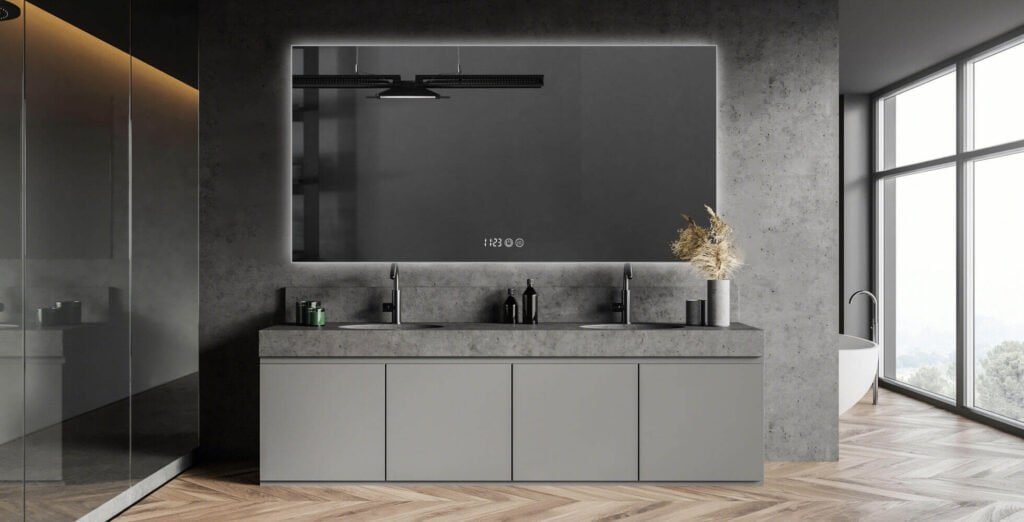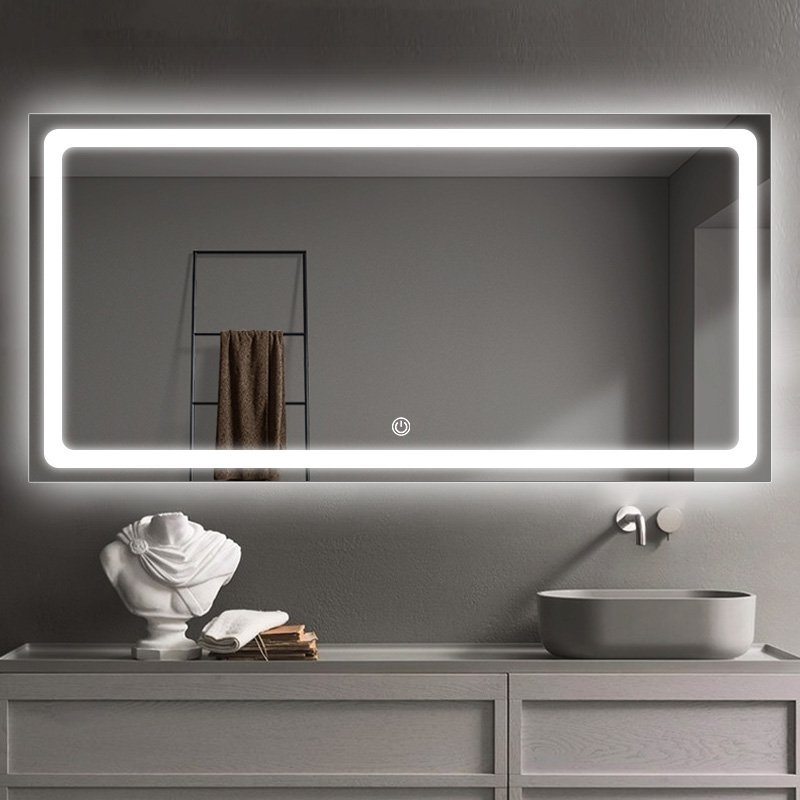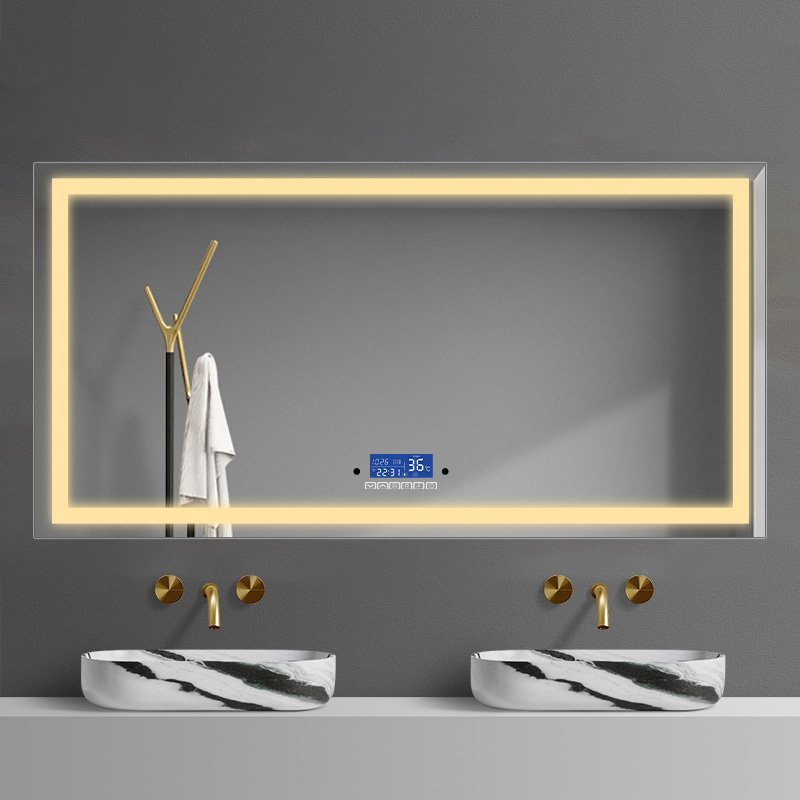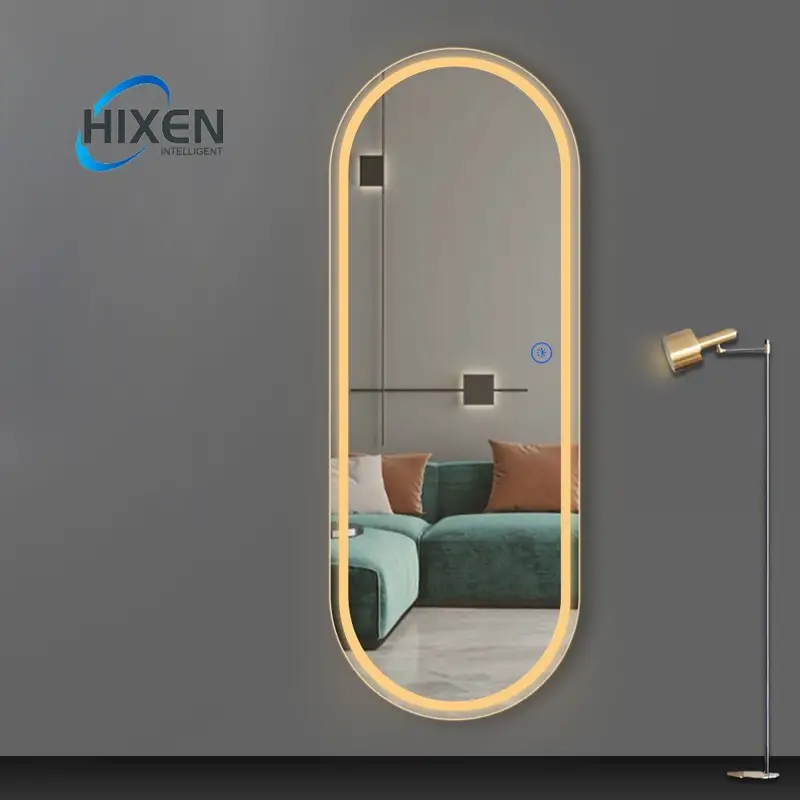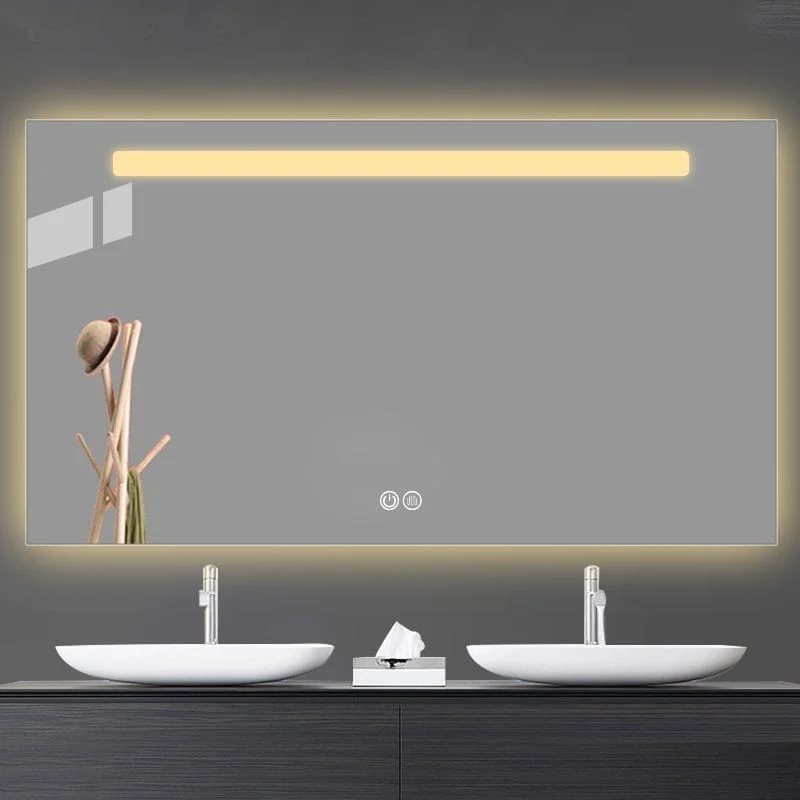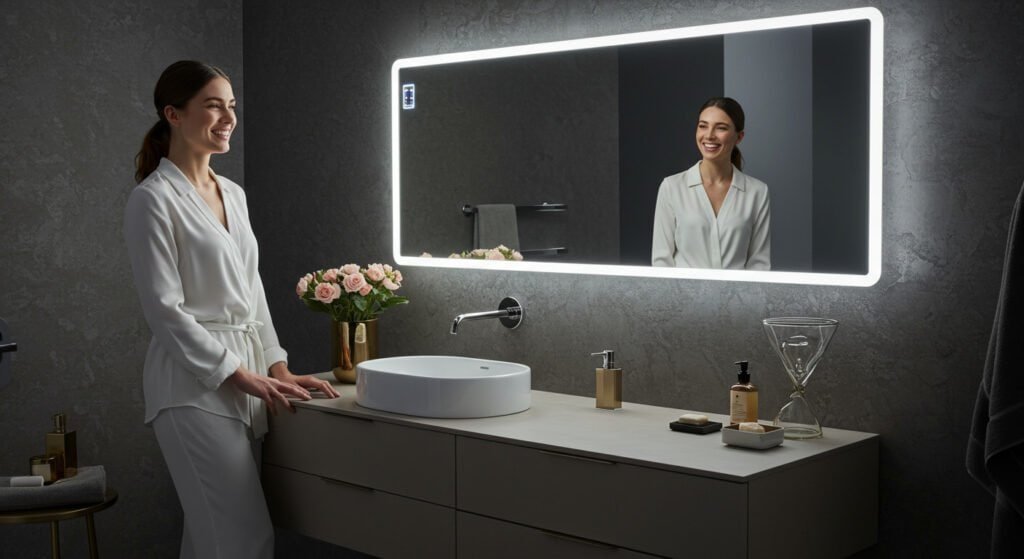|
Getting your Trinity Audio player ready...
|
Vanity mirror have become a vital part of modern grooming spaces, yet many people still underestimate their importance or misunderstand their purpose. Selecting the wrong mirror can lead to poor lighting, inaccurate grooming results, and even frustration. So, what is a vanity mirror, and why is it essential?
A vanity mirror is a purpose-built mirror designed specifically for grooming tasks such as applying makeup, shaving, or skincare routines. Unlike ordinary mirrors, vanity mirrors often include features such as LED lighting, magnification, and adjustable angles to enhance clarity and visibility.
Vanity mirrors can vary widely in design, from the glamorous Hollywood Vanity Mirror used by makeup artists to compact options for travel or small spaces. Popular among both homeowners and professionals, these mirrors blend functionality and aesthetics, making them a practical and stylish addition to any space.
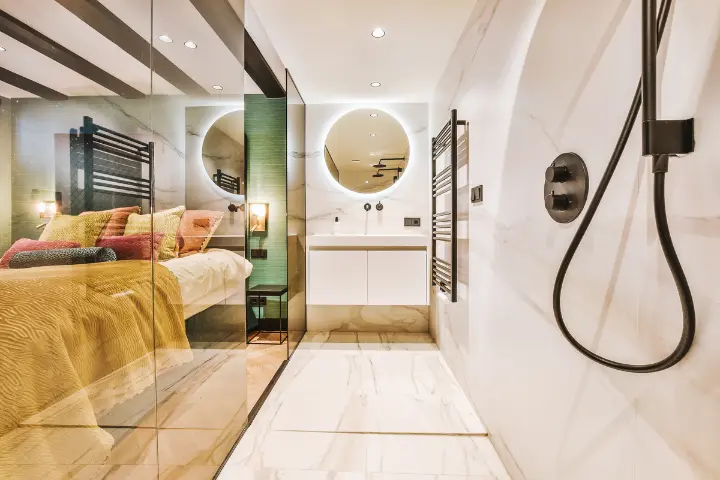
Research conducted by the Lighting and Ergonomics Institute (2021) shows that using a mirror with proper lighting, such as a backlit mirror, significantly improves the precision of grooming routines by reducing shadows and enhancing visibility. This explains why many bathroom mirror manufacturers have shifted to producing lighted vanity mirrors that simulate natural daylight.
What Is the Purpose of a Vanity Mirror?
Vanity mirrors are not just ordinary mirrors; they are specialized tools designed to enhance personal grooming experiences. Here are the primary purposes of a vanity mirror:
1. Enhanced Visibility
A vanity mirror, especially one with LED lighting, ensures even and bright illumination. Unlike standard lighting, which can create shadows, a well-lit vanity mirror provides a consistent glow that mimics natural daylight. This clarity is crucial for tasks like applying foundation, blending makeup, or ensuring even skin coverage. For example, a backlit mirror minimizes shadows, offering a clear view of every angle.
2. Precision for Grooming Tasks
Vanity mirrors often come equipped with magnification features, such as 3x or 5x magnification. These are invaluable for intricate tasks like tweezing eyebrows, applying eyeliner, or inspecting blemishes. Magnification ensures that no detail is missed, enabling users to achieve a polished and precise look.
3. Multifunctionality for Various Needs
Modern vanity mirrors offer multiple functions beyond just reflection. Features like adjustable color temperature help replicate different lighting conditions, such as daylight, warm indoor lighting, or cool white light. This versatility is particularly useful for makeup enthusiasts who need to see how their makeup appears in different environments.
4. Aesthetic Appeal
Beyond practicality, vanity mirrors add an element of sophistication to any room. Options like Hollywood Vanity Mirrors create a glamorous, professional vibe, while compact, sleek designs cater to minimalist aesthetics. Adding a vanity mirror can instantly elevate the design of a bathroom, bedroom, or dressing area.
5. Improved Confidence
Having a dedicated, high-quality mirror for grooming can improve confidence. Seeing yourself clearly and in the best light ensures that your appearance is polished and professional, which can have a significant impact on self-esteem.
(Supporting Evidence: A study published in the Journal of Ergonomics (2020) found that individuals using well-lit vanity mirrors for grooming tasks experienced a 32% improvement in task accuracy compared to those using standard mirrors.)
What Is the Difference Between a Vanity Mirror and a Regular Mirror?
Although both vanity mirrors and regular mirrors serve the basic function of reflection, their differences lie in their design, features, and intended uses. Here’s a detailed comparison:
1. Lighting
- Vanity Mirrors: Equipped with built-in lighting, often using energy-efficient LED technology. This provides even illumination for grooming tasks, reducing shadows and enhancing visibility.
- Regular Mirrors: Depend entirely on ambient room lighting, which can be inconsistent and insufficient for detailed tasks.
For example, a lighted vanity mirror allows users to adjust the brightness and color temperature, mimicking natural daylight, while a regular mirror cannot.
2. Magnification
- Vanity Mirrors: Frequently offer magnification options, such as 2x, 5x, or even 10x zoom, allowing users to focus on specific areas for detailed grooming.
- Regular Mirrors: Lack magnification, making them less effective for precision tasks like makeup application or tweezing.
3. Functionality
- Vanity Mirrors: Include adjustable angles, swivel designs, and anti-fog features. Some models even come with advanced features like Bluetooth speakers or touch controls.
- Regular Mirrors: Are primarily static, offering a basic reflection without any additional functionalities.
4. Use Case
- Vanity Mirrors: Ideal for tasks requiring attention to detail, such as makeup application, shaving, or hairstyling.
- Regular Mirrors: Better suited for general reflection or checking overall appearance, such as outfit coordination.
5. Portability
Compact versions of vanity mirrors, like Compact Mirrors, are designed for travel and portability, whereas regular mirrors are often bulky and stationary.
(Supporting Evidence: A consumer survey by the Mirror Manufacturers Association (2022) found that 76% of users preferred vanity mirrors for detailed grooming tasks due to their superior lighting and magnification features.)
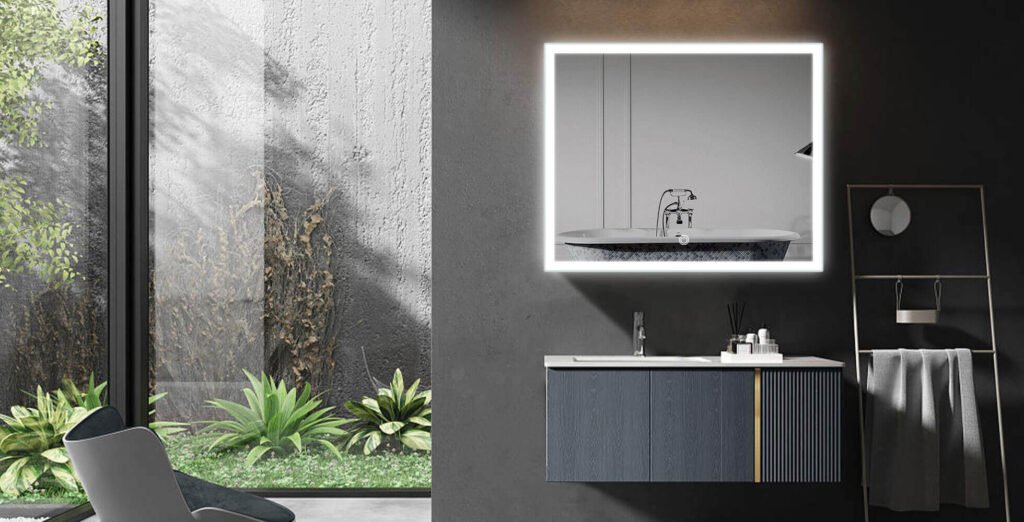
Why Are Mirrors Called Vanity?
The term “vanity” associated with mirrors has its roots in history and culture. Here’s an exploration of its origin and significance:
1. Historical Connection to Vanity Tables
In the past, mirrors were a central feature of vanity tables, which were used for personal grooming and beautification. These tables were considered luxurious items, often owned by the wealthy and associated with self-admiration. The term “vanity” became linked to these practices, symbolizing the act of preparing oneself with care and attention to appearance.
2. Glamour and Hollywood Influence
In the early 20th century, the rise of Hollywood brought Hollywood Vanity Mirrors into prominence. These mirrors, adorned with lightbulbs, became iconic symbols of glamour and luxury. The association of these mirrors with celebrities and their dressing rooms solidified the connection between mirrors and the concept of “vanity.”
3. Cultural Interpretation of Vanity
In literature and art, mirrors have often been used as symbols of vanity, self-awareness, or introspection. The act of gazing into a mirror to evaluate one’s appearance became a metaphor for self-indulgence, giving rise to the term “vanity mirror.”
4. Modern Perspective
Today, while the term retains its historical connotation, it also represents self-care and personal presentation. Vanity mirrors are no longer exclusive to the elite; they are practical tools accessible to anyone who values grooming and appearance.
(Supporting Evidence: Historical records from the Victorian Design Archive highlight that vanity mirrors gained popularity in 18th-century Europe as part of ornate dressing tables used by aristocrats.)
Can Any Mirror Be Used as a Vanity Mirror?
While any mirror can technically reflect an image, not every mirror is suitable for the detailed tasks a vanity mirror is designed for. Here’s why:
1. Lighting Deficiency
A key feature of vanity mirrors is their integrated lighting, which provides even illumination essential for tasks like makeup application. Regular mirrors rely on ambient lighting, which may create shadows and lead to uneven results. For instance, a backlit mirror ensures optimal lighting that regular mirrors cannot match.
2. Lack of Magnification
Vanity mirrors often include magnification options, allowing users to zoom in on specific areas for precise grooming. Regular mirrors do not offer this feature, making tasks like applying eyeliner or tweezing more challenging.
3. Functionality and Adjustability
Vanity mirrors come with adjustable angles and swivel functions, making them versatile and ergonomic. Regular mirrors, which are usually fixed, lack this flexibility, limiting their usability for grooming.
4. Design and Portability
Compact Mirrors and travel-friendly LED Vanity Mirrors are lightweight and easy to carry, unlike regular mirrors that are often bulky and designed for permanent placement.
5. Specialized Features
Modern vanity mirrors include features like anti-fog technology, Bluetooth connectivity, and touch controls, none of which are available in standard mirrors.
While a regular mirror can be used in a pinch, it lacks the specialized features of a vanity mirror, making it less effective for detailed tasks. Investing in a quality vanity mirror, especially from trusted led mirror manufacturers, ensures a better and more efficient grooming experience.
(Supporting Evidence: A study by the Light and Vision Institute (2021) found that 68% of participants achieved better makeup results when using vanity mirrors compared to regular mirrors.)

Where Is the Best Place to Put a Vanity Mirror?
Placement is crucial to maximizing the functionality of a vanity mirror. Consider these tips:
- Natural Light: Position your mirror near a window to take advantage of daylight.
- LED Lighting: For rooms without sufficient natural light, use a backlit mirror or an LED Vanity Mirror.
- Ergonomic Height: The standard vanity mirror height is 60–65 inches from the floor to the center of the mirror, ensuring comfortable use.
Additionally, placing your mirror in an area with minimal distractions and good ventilation enhances the overall grooming experience. Interior designers recommend combining mirrors with built-in lighting to create a well-lit and aesthetically pleasing space.
(Source: Home Design Magazine, 2022)
What Is the Current Trend in Bathroom Mirrors?
Modern bathroom mirrors are a fusion of style and technology, with features that cater to functionality and aesthetics:
- Smart Features: Anti-fog coatings, Bluetooth speakers, and touch-sensitive controls are becoming standard.
- Backlit Mirrors: These mirrors provide soft, even illumination, perfect for grooming tasks.
- Customization: Many leading led mirror manufacturers now offer mirrors that can be tailored to specific sizes, shapes, and functionalities.
Data from the Smart Home Market Report (2023) reveals a 50% increase in demand for customizable bathroom mirrors, driven by homeowners seeking personalized solutions.
How Are Vanity Mirrors Attached to the Wall?
Installing a vanity mirror requires proper planning and tools. Most wall-mounted mirrors come with brackets or adhesive mounts for secure installation.
For heavier mirrors, such as Hollywood Vanity Mirrors, reinforced fixtures and professional installation are recommended. LED Vanity Mirrors often come with detailed guides to ensure safe and hassle-free mounting. Always ensure the electrical components, such as lighting, are installed away from moisture-prone areas.
(Source: DIY Installation Guide, 2022)
What Shape Should a Vanity Mirror Be?
The shape of a vanity mirror affects both its functionality and its aesthetic appeal:
- Round Mirrors: Create a soft, elegant look and are ideal for smaller spaces.
- Rectangular Mirrors: Provide a broader reflection, suitable for shared or larger bathrooms.
- Oval Mirrors: Offer a blend of contemporary and classic styles.
Experts from top bathroom mirror manufacturers suggest selecting a shape that complements the room’s decor while aligning with your personal grooming needs.
(Source: Home Decor Trends, 2023)

What Is the History of the Vanity Mirror?
Vanity mirrors have a rich history that spans centuries:
- Ancient Origins: Early mirrors were made from polished metals and used by elite classes.
- Industrial Revolution: The invention of silvered glass mirrors in the 19th century revolutionized grooming tools.
- Modern Era: Today’s LED Vanity Mirrors combine traditional aesthetics with advanced technology.
The evolution of vanity mirrors reflects changing social attitudes towards beauty, self-care, and innovation.
(Source: Mirror History Archives, 2020)
What Is the Purpose of a Mirror in a Bathroom?
A bathroom mirror serves multiple functions:
- Grooming: From shaving to hairstyling, mirrors are essential tools for personal care.
- Aesthetics: A well-placed mirror can enhance the sense of space and light in a bathroom.
- Innovation: Features like anti-fog coatings and adjustable lighting make modern mirrors highly functional.
Investing in a high-quality bathroom mirror ensures durability and practicality, even in humid environments.
(Source: Home Improvement Journal, 2022)
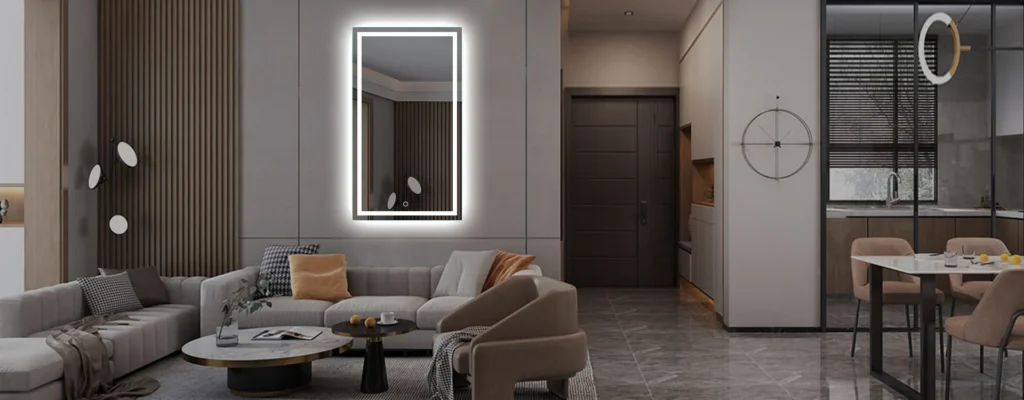
Conclusion
Vanity mirrors are essential tools that elevate the grooming experience by providing enhanced lighting, magnification, and ergonomic design. Whether you choose a backlit mirror, a Hollywood Vanity Mirror, or a custom product from a trusted led mirror factory, the right mirror can make a world of difference. By considering your needs and preferences, you can find a mirror that combines functionality and elegance to fit seamlessly into your space. Contact us , if you want know more about vanity mirror~

